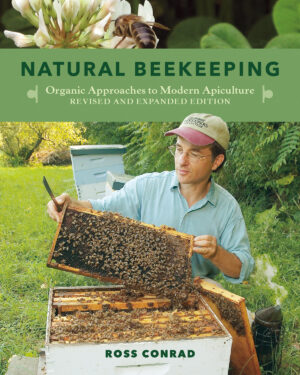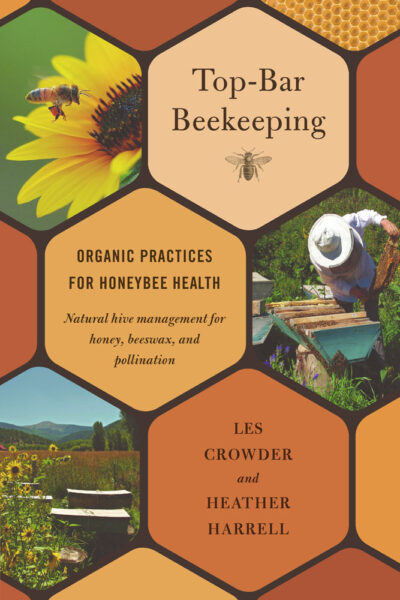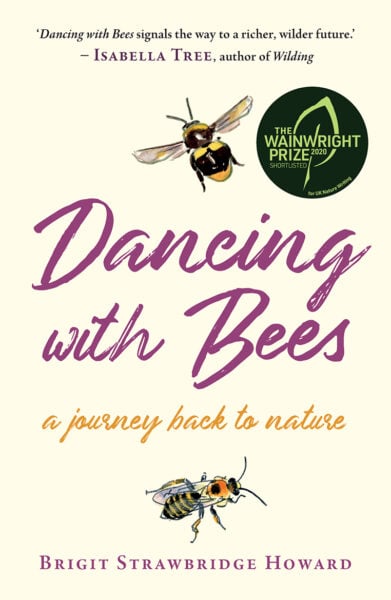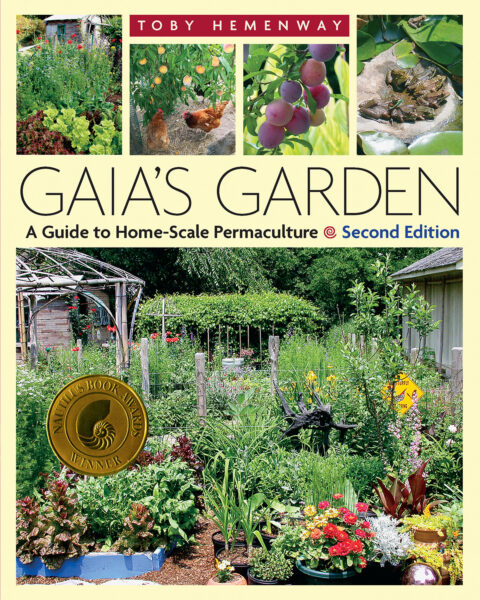The Buzz: Beekeeping for Beginners
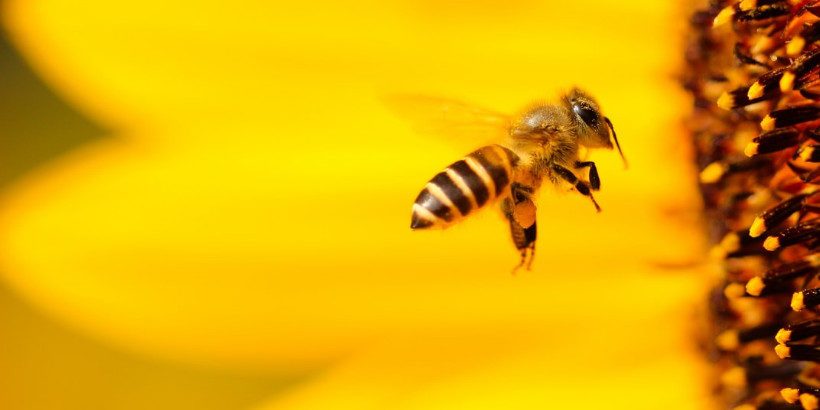
Beekeeping has been on the rise in recent years, and backyard hives have become more and more popular. Ross Conrad knows a thing or two about beekeeping, and his book has become a must-read for enterprising apiculturalists who want to learn how to care for bees holistically and organically.
The following is an excerpt from Natural Beekeeping by Ross Conrad. It has been adapted for the web.
Beekeeping Tips for Beginners
When addressing beginner beekeepers, I like to emphasize the importance of not getting started in beekeeping unless they are ready and willing to fully commit to taking the time to properly educate themselves about honey bee biology and proper care. I also ask people to carefully assess whether they are ready to devote adequate resources of time and money to ensure that the hive will be properly cared for year after year.
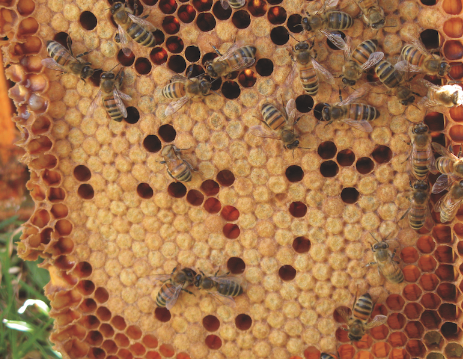 What’s needed is an apicultural ethic that does not place the needs of the bees below human needs. I am not saying that beekeepers should put bees’ needs above human needs. Rather, let’s give them equal importance, striving for a give-and-take, a win-win situation where both parties benefit roughly to an equal extent. Following this approach, for example, one would not secure a hive of bees in the spring, rent them out for pollination, harvest all their honey, and then allow them to die in winter with the plan of purchasing new bees the following spring, simply because it is economically advantageous to do so.
What’s needed is an apicultural ethic that does not place the needs of the bees below human needs. I am not saying that beekeepers should put bees’ needs above human needs. Rather, let’s give them equal importance, striving for a give-and-take, a win-win situation where both parties benefit roughly to an equal extent. Following this approach, for example, one would not secure a hive of bees in the spring, rent them out for pollination, harvest all their honey, and then allow them to die in winter with the plan of purchasing new bees the following spring, simply because it is economically advantageous to do so.
The initial learning curve in beekeeping is fairly steep, so it is wise to start learning well in advance about bees and the role that a beekeeper can play. Beginning to read beekeeping books and journals and take beekeeping classes and workshops a year ahead of setting up your first hives would not be overdoing it. Joining your local or state beekeeping association can be a huge help in this regard too. Busy modern lifestyles often get in the way, and if you allow too little time for education beforehand, you may find yourself unprepared when your bees arrive. At that point, your first year of beekeeping will end up unfolding haphazardly, and you won’t have the kind of experience and good results you dreamed about.
Best Way to Learn About Beekeeping
The best way to learn about beekeeping is to work for a commercial beekeeper. I found out the hard way that it is much better to get paid to learn through an apprenticeship-type situation than to pay for the privilege of learning through a university or the school of hard knocks. If this is not an option, then it is very helpful if you can find a local experienced beekeeper willing to act as a mentor. A mentor can answer questions, guide you through the transfer of your bees into new equipment, and assist you with your first hive visits. Another recommendation I offer the would-be beekeeper is to start with two hives instead of one. Two hives are only a little more work, and not a whole lot more money, than one hive, and yet the benefits are substantial. Two hives help greatly with the steep learning curve all beekeepers must go through: it doubles your experience level and allows you to make comparisons between the hives.
Starter Hive
Another choice you’ll need to make in advance is which type of hive to use. I recommend that novice beekeepers begin with a Langstroth-style hive. After you have a couple years of experience under your belt, you may wish to experiment with other styles such as the top-bar hive or Warré hive (the Warré hive, also known as the People’s Hive, is a vertical top bar hive developed in France by Emile Warré and outlined in his book Beekeeping for All). There is much more information available on the use of the Langstroth hive than there is for top-bar hives or Warré hives, and there are far fewer beekeepers who have experience with the latter two options should you have questions or need the help of a mentor.
Whenever possible, it is advantageous to purchase local bees and even more important to buy types of bees that have some level of resistance to mites and diseases. And it is far easier to start with a nucleus colony or nuc, if you can get one, than to start with packaged bees. Due to the high demand and short supply of bees, it is a good idea for beekeepers to place their orders for packaged bees or nucleus colonies early to ensure that the bees they want will be available at the desired time. Since the advent of colony collapse disorder, many beekeepers are finding that January is not too early to place orders for bees for spring delivery. On some occasions waiting until January may actually be too late, because some bee suppliers sell out well ahead of time, and the best they will be able to do is put you on a waiting list in case they receive order cancellations, or place you on the list for next year. Whenever you place an order, please be sure to assemble and prepare all your equipment before your bees arrive. The experience of long-distance shipping or being crowded in a small nuc box is stressful for bees. To keep stressed bees contained for several more days or weeks while you rush to order, assemble, or paint hive equipment is not a good situation.
Final Thoughts
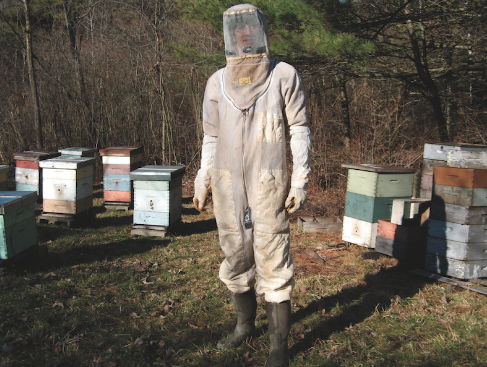 The final piece of advice I like to offer first-year beekeepers is to open up and check on their hives on a regular basis. Some beekeepers might tell you to leave your hives alone and keep colony inspections to a minimum. Back in the old days before mites, small hive beetles, and a host of honey bee diseases surfaced on the North American continent, this advice would have been appropriate. Today, however, the environment that bees have to navigate and the interior of the hive cavity have been so manipulated and changed by humans that in most of the country, to leave hives alone is more likely to lead to colony death than to aid in its ability to thrive.
The final piece of advice I like to offer first-year beekeepers is to open up and check on their hives on a regular basis. Some beekeepers might tell you to leave your hives alone and keep colony inspections to a minimum. Back in the old days before mites, small hive beetles, and a host of honey bee diseases surfaced on the North American continent, this advice would have been appropriate. Today, however, the environment that bees have to navigate and the interior of the hive cavity have been so manipulated and changed by humans that in most of the country, to leave hives alone is more likely to lead to colony death than to aid in its ability to thrive.
I check my bees every 7 to 14 days. While doing so, I try to keep the disturbance of the hives to a minimum. Nevertheless, I encourage new beekeepers to open hives, remove frames, inspect the brood area, look for eggs, try to find the queen, and observe the levels of pollen and honey within the hive every one to two weeks during the first year. That’s right, every week or two if possible! Your goal is to get a sense of whether the hive is doing well and developing normally or not.
There is a limit to how much you can learn about beekeeping from classes, workshops, articles, videos, and books. In the end, to become a successful beekeeper you have to actually open hives and handle frames of brood and bees. After the first year of handling the bees regularly, you should not have to go through your hives and disturb the bees so frequently. Instead, you can limit your weekly or biweekly hive checks to simply taking a quick look under the inner cover.
Opening and Inspecting the Hive
Here are the basic steps to take, in the proper sequence, whenever you open a hive.
-
Figure out why you are going to open the hive and what you want to accomplish.
-
Don clothing and headgear that will make you feel comfortable working with the bees; then light your smoker.
-
Approach the hive from the side or the back, not the front, where you may block the flight path of the foragers and make them defensive.
-
Smoke all entrances. Allow the smoke to always proceed you and announce your presence prior to entering any part of the hive.
-
Remove the inner cover, and always check it for the presence of the queen before you put the cover down. She could be anywhere!
-
If you decide to remove a frame, make sure to choose one of the outermost frames (or one next to the outermost) first in order to reduce the chance that you will injure the queen.
Your goal is to be a beekeeper, not a bee haver. This is accomplished by working in partnership with the colony and never abandoning the hive to its own devices, which might result in the hive starving or dying from disease. The ancient craft of beekeeping can be incredibly fulfilling and enjoyable as long as one is committed to following through, overcoming the various frustrations that may be encountered, and persevering even when a task occasionally seems overwhelming or intimidating.
Recommended Reads
Recent Articles
Interested in growing trees? Here are some tips on successfully planting, transplanting, and pruning trees to create a flourishing forest garden! The following is an excerpt from The Home-Scale Forest Garden by Dani Baker. It has been adapted for the web. Planting Potted Trees and Shrubs If you order potted trees, check with your supplier to…
Read MoreWith the right strategies and practices, composting on a small farm is surprisingly easy and inexpensive. Just follow these steps for making compost, and your farm will be thriving in no time! The following excerpt is from The Lean Farm Guide to Growing Vegetables by Ben Hartman. It has been adapted for the web. (All photographs by Ben…
Read MoreGarlic mustard: while known as “invasive,” this plant can be consumed in its entirety and has great nutritional value. Plus, the garlic-flavor is a perfect addition to any recipe that calls for mustard! The following are excerpts from Beyond the War on Invasive Species by Tao Orion and The Wild Wisdom of Weeds by Katrina…
Read MoreEveryone loves a refreshing, fermented, nutritious drink…even your garden! Take your fermentation skills out of the kitchen and into the garden by brewing fermented plant juice. The following is an excerpt from The Regenerative Grower’s Guide to Garden Amendments by Nigel Palmer. It has been adapted for the web. How to Make Fermented Plant Juice Fermented…
Read MoreWant to see your crops thrive this upcoming growing season? The key is in soil fertility and health. Spend time maintaining your soil’s health to guarantee bigger and better crops come harvest time! The following is an excerpt from No-Till Intensive Vegetable Culture by Bryan O’Hara. It has been adapted for the web. What Is Soil Fertility?…
Read More

